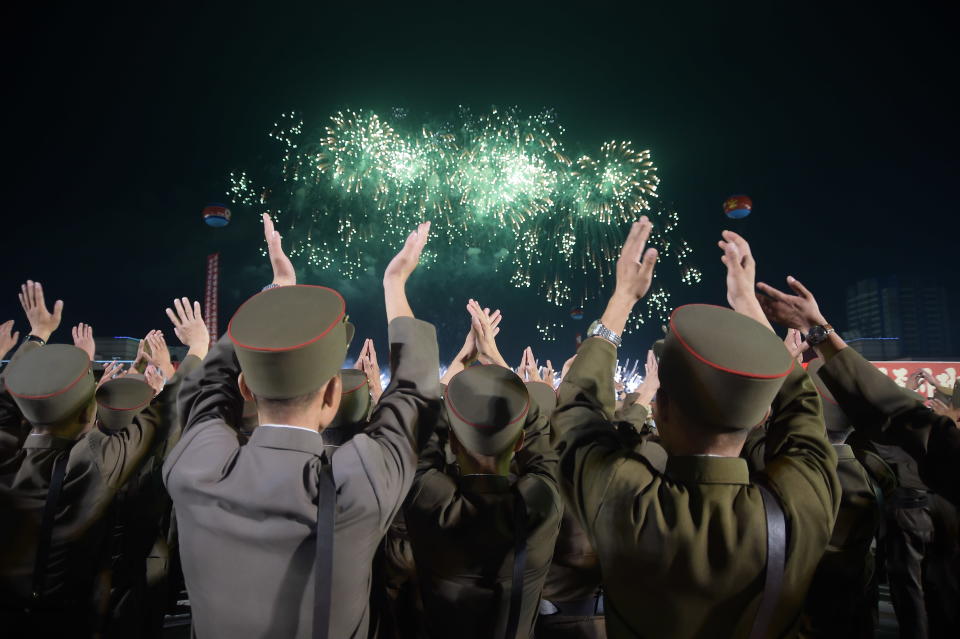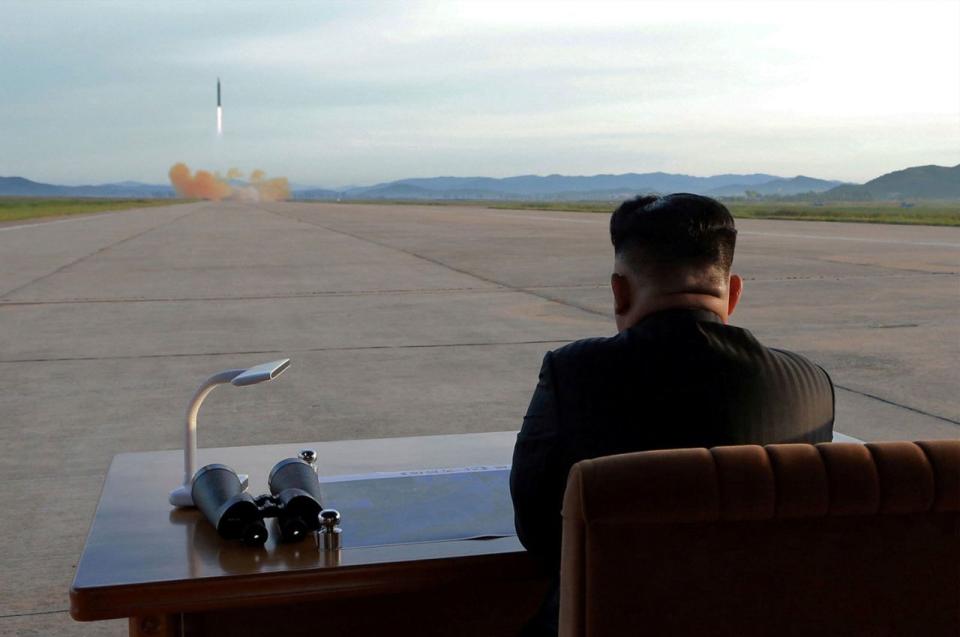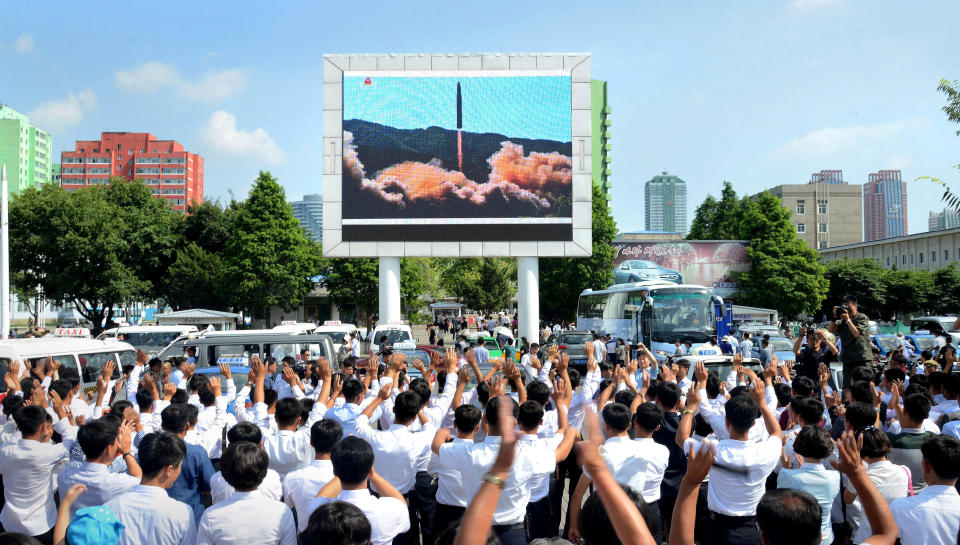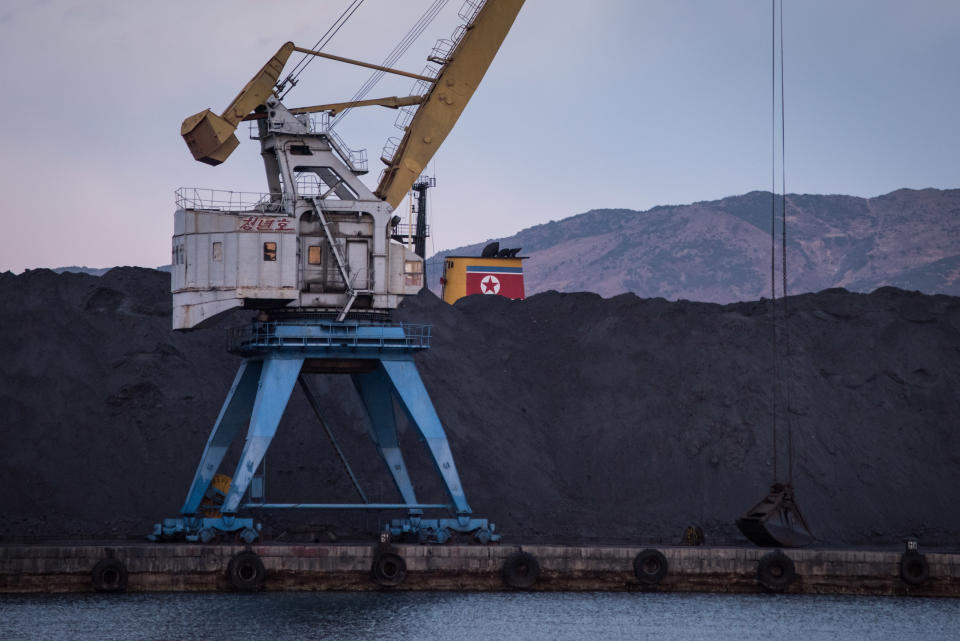How Kim Jong Un got that 'nuclear button' on his desk
North Korean leader Kim Jong Un boasted about having “a nuclear button always on my desk” during his annual New Year’s address on Monday. He warned that all of the American mainland is within range of his country’s missiles, so the U.S. will not risk war against his regime.
Kim also called for improved relations with South Korea and suggested he might be willing to send a delegation to the 2018 Winter Olympics in Pyeongchang next month. But this was cold comfort coming from a regime that spread anxiety throughout East Asia with its weapon development throughout 2017.
In September, North Koreans reportedly flooded the streets of Pyongyang for fireworks and all-around revelry after the regime successfully tested a hydrogen bomb. Kim’s regime is among the world’s most tyrannical and the population is bombarded with militaristic propaganda, so it’s hard for outsiders to distinguish between feigned jubilation from authentic. But it’s impossible to overlook the rapid development of North Korea’s missiles and nuclear weapons technology.
North Korea is a desperately poor country, and one of the world’s most-heavily sanctioned. Few of its citizens get the opportunity to study overseas. How did they manage to vault into the ranks of the world’s leading military powers? Who has been helping them with funding and technical expertise?

The image of Kim in Western media is often cartoonish — until he tests yet another intercontinental ballistic missile or threatens another U.S. ally. But Richard Allan, a professor emeritus at Brooklyn Law School who focuses on the legal issues surrounding international terrorism, said Americans shouldn’t be surprised when leaders like Kim succeed in acquiring new technologies or try to muscle their way into international negotiations on their own terms.
“He may look like a fool, but he is not a fool. He is a dangerous, dangerous person. He will not let anything stop his ability of getting whatever he wants, and now he wants a chair at the table, with the Americans, the French, the Brits, maybe even the Israelis,” Allan told Yahoo News.
Part of Kim’s strategy is straightforward. The North Korean government keeps its people poor and starving and allots a huge percentage of the national budget to the military. Much of the government’s propaganda disparages the U.S. as an imperialist power and justifies North Korea’s pursuit of ballistic missile and nuclear technology as central to protecting its national sovereignty. The military personnel and scientists who contribute to this pursuit are celebrated as national heroes.
Narushige Michishita, director of the Security and International Studies Program at the National Graduate Institute for Policy Studies in Tokyo, doesn’t think North Korea’s weapons advancement is surprising. Though fiscally poor, the country is extremely rich in natural resources. This allows them to trade wood, coal and other materials for supplies. Quartz reports that North Korea may be sitting on $10 trillion in untapped mineral resources. And they don’t need to import uranium, which can easily be incorporated into a nuclear weapons program, thanks to its large stockpile from mining.

“When Japan colonized the Korean Peninsula, we turned the northern part of Korea into an industrial base and the southern part into an agrarian area,” Michishita told Yahoo News, adding that the North Koreans are fairly well-educated — despite the political indoctrination and outright lies they get from their government.
“They are basically teaching crazy, untrue history to their students, but most of the people are literate and highly educated, with this industrial background and lots of minerals. While people are not perfectly fed, it’s not surprising that they can produce nuclear weapons or missiles, because that’s their tradition.”
At the same time, he continued, the recent accelerated production of new types of missiles is a cause for concern. Michishita said “we are definitely sure” that most of North Korea’s mobile launchers for newly developed missiles came from China. He said enterprises with connections to the Chinese People’s Liberation Army gave these vehicles to North Korea after receiving a certificate from the Democratic People’s Republic of Korea stating that they would be used to transport timber. But Michishita strongly doubts China didn’t know they would go toward military use.
Michishita suspects that Russia, Ukraine or both assisted the North Koreans in developing ballistic missiles.

“The name of the game the Russians are playing is to make life as difficult as possible for the Americans. It’s very simple,” Michishita said. “China is playing a more nuanced game. They would like to make life difficult for the Americans but are interdependent with the U.S., so they are trying to strike a good balance.”
All of these countries, he said, want to reduce U.S. influence in the region as much as possible.
Professor Allan, of Brooklyn Law School, said some of the ICBM parts look identical to parts that have been manufactured in Ukraine for years. The New York Times reported last August that rocket engines used by North Korea could likely be traced back to a Ukrainian factory with connections to Russia’s missile program.
When I visited Japan’s defense ministry in Tokyo, I asked Ryusuke Wakahoi, the deputy director of the Strategic Intelligence Analysis Office, where the missile technology came from. As a government official, he couldn’t comment definitively, but said it’s widely suspected that North Korea has been using technology from the former Soviet Union and sharing test results with Syria and Iran.

Nick Kapur, a historian of modern Japan and East Asia at Rutgers University, said North Korea’s acquisition of nuclear weapons may feel lightning fast but was actually a long time coming. In the 1990s, he recalled the Clinton administration claimed that North Korea was on the verge of acquiring nuclear weapons — just one or two years away.
Kapur said North Korea has been coveting nuclear weapons since the 1950s and repeatedly asked the Soviet Union and China to give them nuclear technology in the 1960s. Both nations rejected these requests, but the USSR did help North Korea build several nuclear reactors in the ’60s, supposedly for “peaceful power purposes.”
“The Soviets gave them some amount of technical aid though they refused to transfer nuclear weapons technology as far as we know,” Kapur told Yahoo News. Until the USSR collapsed, it had been propping up North Korea. As a result of this loss of support, there was a huge famine in the 1990s. According to Kapur, China partially assumed the USSR’s role by purchasing natural resources like coal and wood products.
Arms sales are important to North Korea’s economy. Since the ’80s, North Korea has been a major exporter of ballistic missiles. They’ve sold missiles to Iran, Pakistan and other places.

In July 2011, Abdul Qadeer Khan, the nuclear physicist who founded Pakistan’s nuclear bomb program, revealed to the Washington Post that he had personally transferred millions of dollars from the North Korean government to top officers with the Pakistani military in the late ’90s. In exchange for this bribe, Pakistani officials gave the North Koreans access to sensitive information on developing nuclear technology. Khan released a letter he claims to have received from a North Korean official in 1998 that outlines this arrangement. The Post reported that Pakistani officials, including those named in the letter, questioned its authenticity, while Western intelligence officers said it confirmed a bribe they had previously suspected but couldn’t prove.
According to a United Nations report, leaked in February 2017, North Korea has been able to flout international sanctions by using a sophisticated web of overseas companies.
Kapur characterized North Korea as “sort of a mafia state” that’s willing to engage in all sorts of illegal activity to get cash: money laundering, counterfeiting, smuggling contraband, selling drugs.
And when it comes down to it, the technical hurdles for developing nuclear weapons are simply not that high.
“The science behind both nuclear weapons and ballistic missiles to deliver those weapons is well-known. It’s open. Anyone can read about it,” Kapur said. “…It’s not secret knowledge. When you read about technology transfer, these are not the core secrets of nuclear weapons. The actual basic science is really well known, about 75 years old at this point.”
Read more from Yahoo News:


